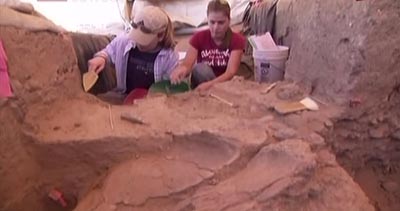Does Ancient Art Prove Dinosaurs lived with Humans? |
Evolutionists and materialist scientists believe that dinosaurs were killed off in a mass extinction event – an asteroid striking the earth – that happened (so they say) 65 million years ago. (A time frame based on circular reasoning. See GULO and Other Irrational Atheist Arguments, Part 2.) They also believe that man did not evolve to the current, recognizable form of homo sapiens until 200,000 years ago. Thus according to their timeline, it is impossible for dinosaurs and man to have lived together because dinosaurs went extinct some 64.8 million years before the first human existed. This gap is depicted in the evolutionary diagram1 below: (Between the green dinosaur and the white human skull.)
What then are we to make of all the depictions of dinosaurs in ancient art, as the one above of the brontosaurus? To see a good number of these depictions, visit Genesis Park Ancient Dinosaur Depictions.2 One of my favorites is this one from a temple in Angkor, Cambodia:
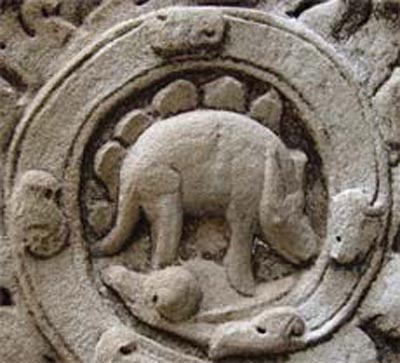
The implication from such art – humans saw living dinosaurs – invalidates the evolutionary timeline above. It also questions the validity of the entire evolutionary story. So evolutionists and materialists object strongly to the conclusion that such art depicts what it appears to: dinosaurs living in full view of humans who saw them and captured them in art. Since dinosaurs living with man is denied by evolutionists, atheists and others, they must come up with an explanation of how these depictions came about. Time now for evolutionist story-time, because as we’ll see none of their explanations make sense and are fit only for young children who don’t know better, and the gullible. Let’s run down the common explanations for the stegosaurus carving above:
Objection: “It doesn’t look like a stegosaurus”
This is a common objection on the ‘net regarding the Angkor stegosaurus depiction. I would then ask what is this next picture a depiction of?
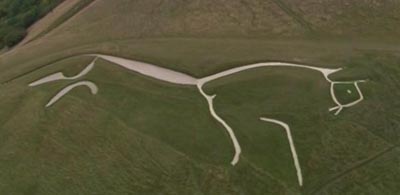
Here’s a description:
“Carved into the white chalk hills of southern England is a giant figure. This astonishingly graphic outline is said by some to go back 3000 years. Other theories date it to King Alfred’s victory over the Danes 1200 years ago. What is it? Who carved it into this chalk hillside and why? It looks like a horse but legend tells us it may be the dragon slain by St. George, patron saint of England.”3
What do you think it is? Here’s a close up of the rather interesting head. Odd proportions for a horse’s head. And what’s with the forked tongue like a monitor lizard? Regardless whether you think this is a horse or a dinosaur, the fact is – it doesn’t look exactly like either one. That’s because it’s not a scientific representation, it’s an artistic depiction. And artists take liberties. They stylize. The same can be said of the Angkor Stegosaurus. It’s an artistic depiction. Obviously the artist was not trying to be scientifically accurate, but rather was conveying an impression, an idea. Clearly the Angkor artist was trying to convey the impression of a Stegosaurus. And he succeeded.
Objections such as:
“The ‘stegosaurian plates’ are merely background decorations”
and
“It’s just an imaginary creature”
… are simply inadequate. As Jonathan O’Brien and Shaun Doyle point out4 regarding the ‘stegosaurian plates’ they are quite different from all the other decorative art in the temple. With regards to it being an “imaginary creature”, the problem with that is two fold: 1. It doesn’t look like an imaginary creature. It looks like a quite recognizable creature – a stegosaurus. 2. All the other animals depicted on the temple are real creatures. This is a point similar to one that Kent Hovind makes about the Chinese astrological (zodiac) calendar which depicts 12 different creatures for the 12 different annual cycles. All the creatures are real creatures – except (in theory) for the “Dragon.” Why have 11 real creatures, and one mythological one? Could it be that what is depicted is actually a stylized drawing (artistic depiction) of a Dinosaur? This makes even more sense when you consider the term “Dinosaur” is of rather recent vintage. (The term was coined by Richard Owen in 1842). The ancient Chinese calendar no doubt predates the term, and anyone who would have translated the Chinese term would have therefore translated something other than “dinosaur.” The term “dragon” is the ancient term commonly used for dinosaurs – including in the bible.5
Objection: “They Carved it from Fossils”
This suggestion demonstrates a striking lack of knowledge regarding what it takes to assemble a complete dinosaur from fossils. As O’Brien and Doyle put it “…it takes a lot of training and skill to accurately reconstruct from fossils what a dinosaur looked like.”6 That’s an understatement. Not only does it take years of training, it takes thousands of hours to reconstruct a dinosaur from piles of bones in the dirt. As an illustration, suppose you were digging around and found these bones:
Without looking it up (ancients wouldn’t have had the access to information you have) do you know what creature or creatures they belong to, or where on the animal they belong? Let me give you a hint: They both come from creatures depicted below. Do you know which ones? And where in the skeletal structure they belongs? (And by the way, it’s not fair trying to use these pictures to try to figure it out – the ancients wouldn’t have had completed skeleton diagrams to go by!)
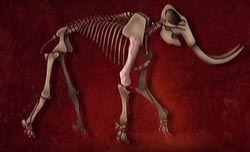 Wooly Mammoth Wooly Mammoth |
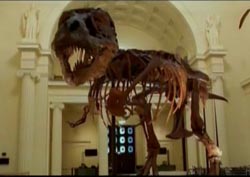 Tyrannosaurus Rex |
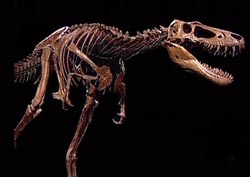 Nanotyrannus7 Nanotyrannus7 |
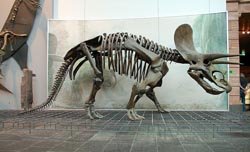 Triceratops |
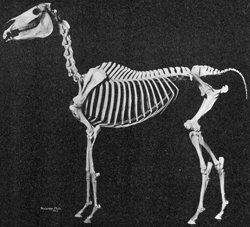 Arabian Horse Arabian Horse |
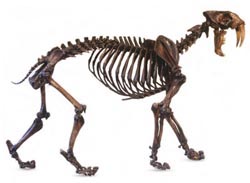 Saber-tooth Tiger or Cat |
For those not properly trained, not a simple task, is it? The answer is here.
To further illustrate, to create the pretty displays we see in museums, it requires the following:
Find a site, setup a base of operations, organize the team
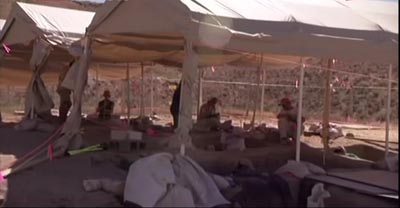
Systematically organize and dig through the site
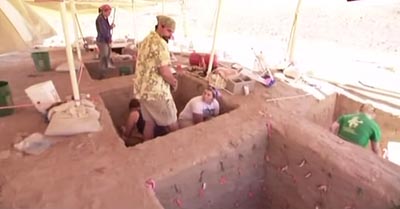
Review, identify and categorize the bones
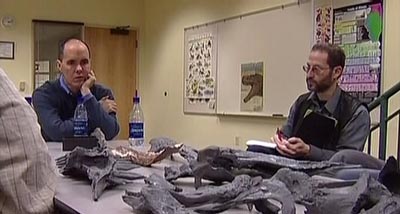
Then assemble them in their final form for display:
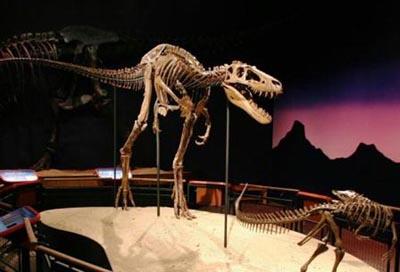 Above: Jane a Nanotyrannus or Juvenile Tyrannosaurus Rex on display at the Burpee Museum, Rockford IL |
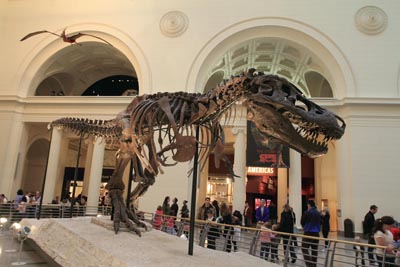 Above – Sue, a Tyrannosaurus Rex on display at the Chicago Field Museum |
Please note:
To create the above display of Jane at the Burpee museum took 2 years
and 10,000 hours of preparation and research.8
To create the above display of Sue at the Field Museum took 3 years.9
I am not saying ancient cultures would have followed the exact same modern procedures, but they would necessarily have had to likewise invest huge amounts of time and effort to create a recognizable form from buried fossilized bones. Hopefully this little demonstration has made clear that assembling dinosaur bones is, as stated above, not a simple task. As a matter of fact, it’s a huge amount of work that takes thousands of hours.
So what are we to conclude about how ancients were able to accurately depict dinosaurs, which – according to evolutionists -they should know nothing about? Occam’s razor is appropriate here – the answer with the fewest assumptions (and therefore typically the simplest answer) is usually the correct answer. On the one hand we have evolutionists, materialist scientists and other deniers of the obviously apparent fact that dinosaurs lived (and live) with man saying there’s no way ancient cultures could have seen dinosaurs. Thus to account for dinosaurs in ancient art evolutionists must either believe one of the above implausible theories or come up with their own theory as to how ancients would have known what dinosaurs looked like.
Or you can simply believe that ancient cultures saw living dinosaurs, and thus were able to put them in carvings, paintings, little statues, etc. Or course that conclusion also means that dinosaurs were alive during the time of these ancient cultures. An inconvenient truth for evolutionists and others who deny the biblical account of history.
For believer’s in God’s word the ancient art is easy to explain. Dinosaurs were created during creation week with the rest of the creatures God created. They survived the great flood of Noah’s time on the ark as did all other creatures. (God likely brought young representatives of large dinosaurs to Noah – instead of full grown ones.) After the flood they began to spread out as did other animals. Most ancient cultures saw dinosaurs, and thus we have many samples of art with dinosaurs or “dragons” depicted. But who wants to live next to a huge dinosaur? So as human populations grew, they encroached on land occupied by dinosaurs. And not wanting to live next to dinosaurs, brave hunters or warriors killed them. That’s why there are many stories such as the one from England of a valiant warrior slaying the Dragon. In England’s case it’s St. George slaying the dragon, but there are many other accounts.
So did ancient cultures spend thousand of hours digging up then studying dinosaur bones so they could then assemble them, a task that would have taken thousands of hours. Hours that would be better spent hunting for food and providing for the other necessities of a no doubt harsher life than in modern times. Then, having assembled and housed the large figure somewhere, allowed artists to see them, and later carve or paint them. Is that what we are to believe? Or did the ancient artists simply see living dinosaurs? And like everything else they depicted, worked from what they saw with their own eyes?
What do you think the more simpler, more rational answer is? If you still think they drew these from fossils they assembled, your commitment to evolutionary faith (not fact) is showing.
Duane Caldwell | posted 2/5/2015 | printer friendly version
Related article:
Why Have So Many Humans Seen Dinosaurs?
Notes
1. By LadyofHats (Own work) [CC0], via Wikimedia Commons
back
2. Genesis Park “Ancient Dinosaur Depictions”
http://www.genesispark.com/exhibits/evidence/historical/ancient/dinosaur/
back
3. Skyview episode “Mysteries, Myths and Legends” Smithsonian documentary, 2007
back
4. Creation.com Jonathan O’Brien and Shaun Doyle
“Did Angkor really See a dinosaur?” http://creation.com/did-angkor-really-see-a-dinosaur
back
5. It is believed by those who take the bible seriously that what we call a “dinosaur” is depicted in the bible in Job 40.15-42 (Behemoth).
The word translated “dragon” (Hebrew ![]() “tanniym”) appears for example in Neh 2.13 KJV
“tanniym”) appears for example in Neh 2.13 KJV
back
6. O’Brien and Doyle “Did Angkor really See a dinosaur?” see note 4
back
7. Original classified as a Juvenile Tyrannosaurs Rex, newer evidence points to a conclusion that it is in fact a different species -a Nanotyrannus
back
8. The Mystery Dinosaur Science Channel Documentary, 2006
back
9. Dinosaur 13, CNN Documentary, 2014
back
Image Credits, from Top, left
1. Brontosaurus petroglyph
Genesis Park “Ancient Dinosaur Depictions”
http://www.genesispark.com/exhibits/evidence/historical/ancient/dinosaur/
2. Evolutionary Time Line
By LadyofHats (Own work) [CC0], via Wikimedia Commons
3. Angkor Stegosaurus
Creation.com “Angkor Saw a dinosaur?”
http://creation.com/angkor-saw-a-stegosaur
4. English hillside Dragon/horse
Skyview episode “Mysteries, Myths and Legends” Smithsonian documentary, 2007
5. Quadratojugal bone
The Mystery Dinosaur Science Channel Documentary, 2006
6. Scapula coracoid
The Mystery Dinosaur Science Channel Documentary, 2006
7. Wooly Mammoth
Dinosaur 13, a CNN Documentary, 2014
8. Tyrannosaurus Rex
Dinosaur 13, a CNN Documentary, 2014
9. Nanotyrannus
The Mystery Dinosaur Science Channel Documentary, 2006
10. Triceratops
EvaK: „Triceratops Skeleton Senckenberg 2”. Engedély: CC BY-SA 2.5, forrás: Wikimedia Commons
11. Arabian Horse
Osborn, Henry Fairfield, 1857-1935. Huntington, Randolph.
http://commons.wikimedia.org/wiki/File:Arabian_horse_skeleton.jpg
12. Saber-tooth Tiger
Pixshark
http://pixshark.com/saber-tooth-tiger-skeleton-drawing.htm
13. Excavation base camp
Journey to 10,000 BC History channel documentary, 2008
14. Divided dig site
Journey to 10,000 BC
15. Student excavators
Journey to 10,000 BC
16. Review of Bones
The Mystery Dinosaur Science Channel Documentary, 2006
17. Jane, a Nanotyrannus or Juvenile Tyrannosaurus, Burpee Museum
Burpee Museum of Natural History “Exhibits”
http://www.burpee.org/page.asp?PageID=16
18. Sue, a Tyrannosaurus Rex, Chicago Field Museum
http://www.gstatic.com/frommers/images/837126.jpg

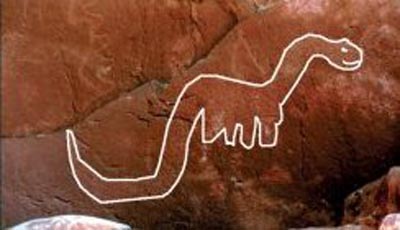
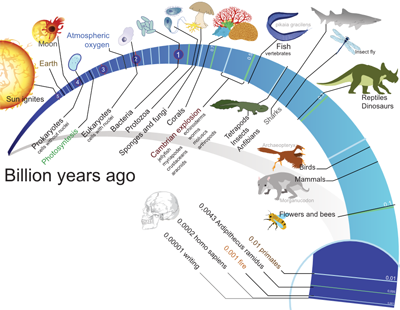
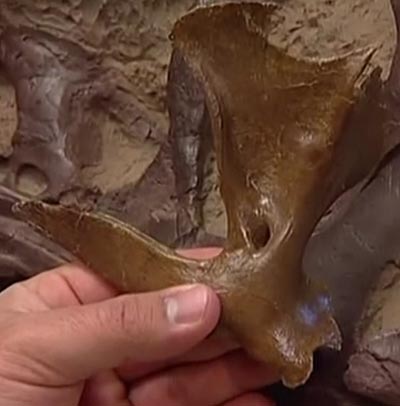
alone_400.jpg)
